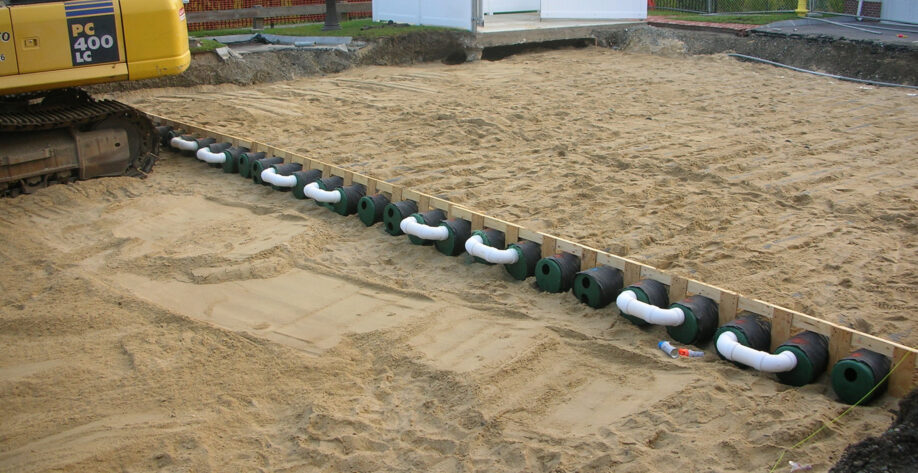It is no secret that the lack of prime buildable land has encouraged real estate developers to be “extra creative” when planning new construction and redevelopment projects in recent years. Challenging site constraints such as topography, soil conditions, environmental resource areas, and zoning setbacks have forced a game of give and take when it comes to a building’s footprint, parking, accessible routes, and landscaping requirements. Often overlooked in this process is the importance of providing adequate space for your on‐site sewage disposal system.
The capacity and location of the on‐site sewage disposal system becomes increasingly important when planning mixed‐use developments as the tenancy is typically unknown, or may change in the future. There have been numerous instances in which the tenant occupancy was actually constrained by the design of the disposal system. There have also been various cases where a disposal system was designed, permitted and installed in anticipation of expected retail tenants only to find that a food establishment or health club, or both, were better suited for the location due to current economic conditions.
Property owners and developers should not be at the mercy of their sewage disposal system design. If the on‐site disposal system is not designed with expansion or flexibility in mind, changing or signing new tenants could be a challenging and costly proposition. When maximizing a new site for development, it is crucial to strike an appropriate balance between disposal system capacity and gross floor area of your building. The use of some innovative and alternative (I/A) septic systems can allow a developer to build a system that is capable of handling the same flow as a traditional system but requires less area. This allows a larger building footprint, more flexible occupancy, and greater revenue potential.
There are several forms of I/A septic systems, including:
- Textile filters;
- Trickling filters;
- Alternative soil absorption systems (SAS); and
- Aerobic treatment systems.
Various I/A techniques provide superior treatment of wastewater effluent and additional storage volume, while allowing for a significant reduction in necessary footprint area. Although states have the jurisdiction to regulate reduction in footprint area, Massachusetts currently allows up to a 40% reduction from a traditional system. This can result in land area savings of more than 5,000 s/f, leaving the excess available for building area. Even greater reductions can be achieved in other New England states, such as N.H. and VT.
Developers and owners should also be aware of the potential cost savings when using certain I/A systems. Traditional on‐site sewage disposal systems that are sized to handle between 2,000 gallons per day (GPD) and 10,000 GPD require a pressure dosed pipe; and stone, or chamber and stone system. This requires expensive pump equipment, large emergency storage chambers or emergency back‐up generators, as well as electrical infrastructure and ongoing mechanical maintenance. Environmental regulators have agreed that certain types of I/A systems should not be pressurized and therefore do not require expensive equipment or significant maintenance. Certain I/A systems also use clean sand in place of crushed stone which can result in savings of up to $10 per cubic yard.
A component of sizing on‐site disposal systems is determining the long‐term acceptance rate (LTAR) of the system. This is a measurement of how much effluent the in‐situ soil can accept and infiltrate into the ground. This varies based on soil texture and the effluent’s strength, which leads to a biomass on the soil. Traditional pressure dosed systems restrict the use of higher loading rates in sandy soils, hence increasing absorption field size. However, I/A systems allow higher loading rates, resulting in superior land use efficiency over traditional systems.
All sites are different and each will require unique and creative land planning. I/A systems are not appropriate for every site but when municipal sewer is not available; owners should be aware of their options for sewage disposal and to consider implications for future expansion and flexibility.
Tagged In:
Civil Engineering
